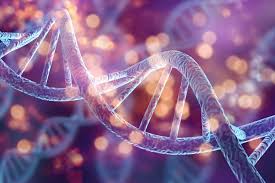Deoxyribonucleic acid or DNA is basically a hereditary material in every human being and nearly other organisms. Almost all the cells in the human body have similar DNA.
A lot of DNA is situated in the nucleus. Though you can as well find a small amount of it in the mitochondria. The DNA information is stored as the code consisting of other bases, including thymine (T), cytosine (C), guanine (G), and adenine (A).
How It Works
According to DNA experts at Eurofins Genomics, the main purpose of deoxyribonucleic acid is to instruct organisms, including human beings, on how to reproduce, survive, and develop.
For this to happen, DNA sequences referred to as genes get converted into proteins that are basically complex molecules responsible for doing a lot of work in the human body.
Although genes differ in size, ranging from around 1,200 bases to about 900,000 million bases in every human, they make up 1% of the DNA sequence.
It only takes around two steps to produce proteins using instructions from deoxyribonucleic acid. First, the enzyme reads information delivered in your DNA molecule and transcribes it to another molecule referred to as mRNA (messenger ribonucleic acid).
Once this happens, the mRNA molecule’s information gets translated into language, which amino acids understand.
The cell follows those commands so as to connect to the right amino acids in order to create specific types of proteins.
Considering that there are around 18 types of amino acids, which might be put together in different combinations and orders, it gives deoxyribonucleic acid a chance to manufacture proteins.
What DNA Consists Of and How It Looks Like
Deoxyribonucleic acid comprises molecules referred to as nucleotides. Every molecule has nitrogen bases and sugar as well as a phosphate group. These bases are further categorized into four, including:
- Thymine
- Guanine
- Cytosine
- Adenine
The structure of DNA is basically a double-stranded helix, and it normally resembles one of those twisted ladders.
The phosphates and sugar are nucleotide strands, which form a long side, whereas nitrogen bases are rungs. Every rung consists of two kinds of nitrogen bases, which pair to create a complete rung and hold strands of the nucleotide together.
Mitochondrial Explained
As mentioned, mitochondria have a small amount of deoxyribonucleic acid, giving it the name mtDNA or mitochondrial DNA.
Every cell has hundreds, if not thousands of mitochondria, which lie in the cytoplasm. Mitochondrial DNA has 37 genes, which enable it to work normally.
Thirteen of those genes give instructions for manufacturing enzymes involved in producing energy through oxidative phosphorylation. The other genes help to produce molecules referred to as tRNAs (transfer RNAs) as well as rRNAs (ribosomal RNAs), which are responsible for the synthesis of proteins.
Chromosomes and Chromatin
Since your human body has a lot of DNA and your nucleus is small, deoxyribonucleic acid is incredibly packed neatly.
DNA strands are wrapped, coiled, and looped around proteins referred to as histones. In this state, it is referred to as chromatin.
Basically, chromatin is condensed further through the supercoiling process, and it’s packaged into structures, which are known as chromosomes. Every chromosome has one DNA molecule and forms that familiar ‘X’ shape.
Every human being has 46 chromosomes or 23 pairs of chromosomes in total. The biggest chromosome is packed with about 8,000 genes, while the smallest one has around 3,000 genes.
How DNA Replicates
The discovery of deoxyribonucleic acid’s structure enabled researchers to reveal the simple way DNA molecules replicate themselves. The DNA untwists through other chemicals’ help, and two strands split down, as zip does.
Since C always pairs with G and A with T, both strands form the same copy as more nucleotides get attracted into a corresponding place.
This process of replicating is important since cells replicate and divide constantly. If DNA is incorrectly copied, the resulting cells will have jumbled commands and begin to grow out of control. This is how cancer starts.
The Bottom Line!
Deoxyribonucleic acid is important to people’s health, reproduction, and growth. It has instructions important for the cells to manufacture proteins, which affect a lot of functions and processes in the body.
Since deoxyribonucleic acid is imperative, mutations or damage might at times contribute to the development of diseases. But it is vital to know that mutations might be helpful as they can contribute to your diversity.












